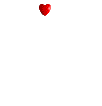Due to the cultural context of the project work, the individual finished works and research will be presented as one piece. The work doesn’t exist as separate entities, rather the research is the work and the work is the research. There is no ‘final film’ or ‘final piece’, the work is an ongoing exploration of certain socio-cultural ideas – ideas of para-social relationships, the relationships we have with ourselves through curated ideas of self, projected identities, the internet, nostalgia and popular social culture. Because the work is a web of ideas, they would be exhibited as such.
The work exists on a website – the individual pieces of work (such as photographs, drawings and films) and the research and development that went into them. The idea of the website is I can continually add more work and research to it as the project unfolds and expands, and can be accessed at any time by anyone from anywhere. Because my work is so closely related to the internet and our relationship with curated digital spaces, having my work exist in this non-corporeal space is perfect for navigating the project as a whole.
The website is designed to be navigated autonomously, by the audience, but it is laid out in a typical web-page format. There are sections for specific 'periods' of work, where you can read through and look through 'finished' pieces of work that were made throughout the exploration of the themes over the period of the year. There is also a section where the audience can read through my research, including scanned pages of my contextural research folder, progress and process photos etc.
In terms of setting up my work in a gallery space, the work would be set up in the corner of a shared space. It wouldn’t need to be in its own room, or isolated away from other works, as the work itself would be contained. The website would be set up on a mac desktop computer, on a desk pushed into the corner, as if it were a workspace in a bedroom (specifically the bedroom of a teenager). On the computer you’d be able to navigate the website however you want, reading information about the projects, accessing sources and references and exploring the piecs of work that are presented on it. There’s a certain simulation to this setup; interaction with the digital self happens on computers and websites, mobile phones etc., and often in private spaces (such as bedrooms). Especially when I was younger, I’d sit in my room, at my desk and play on my computer for hours. Having my work on a website, set up in this way simulates this.
Next to the desk I’d have a small shelf with a television on it, playing my films, and behind the computer I’d have pictures taken from my development pinned up as if they were photos in a bedroom.
The walls surrounding the desk will be painted lilac, the desk will be a glass top desk, there will be a desk chair for the viewer to sit on, and headphones available to listen to sound on the TV/Computer. The unit the TV is sat on should be white, and have storage space underneath it.


Yoshitomo Nara is an example of a gallery space set up that I find influential; the inclusion of developmental work alongside ‘finished’ pieces of work. His exhibition set up is a key reference because its an 'analogue' example of the ways in which a multitude of work can be presented as both a finished piece, an immersive gallery experience, and a look into the research and context of the artist. The feel of the space is very familiar, and feels very much like an open studio tour. If my work was not presented on a computer or website, I would instead present the finished pieces, books and films in a way more similar to this. Photos pinned up on the wall, books in the unit etc. This gives an overarching feeling of cohesive movement between the research and the work, and pays homage to the decora of teenage bedrooms.




Another example would be India Garry’s exhibition piece, ‘Mole in my heart (homage to a teenaged girls bedroom circa 2001), 2017’. This work is a reference because its an interesting example of the ways we can condense often complex and intimate environmental experiences (the ways in which teenage girls decorate their rooms) into a comprehensive gallery context. This work is an homage, but its also edited and condensed.
When I was a teenager, my walls were obsessively decorated with posters, NME clippings of musicians I fancied, articles, printed photos of my friends, scrawled notes and quotes that I found influential. The diverse spread of cultural touchstones, personal interest and memorabilia from my youth has gone on to influence my studio practice even today. The web of ideas that have been collected on the walls of teenagers bedrooms are truly a contextual research phenomenon, and Garry's homage to that through a carefully curated and edited version is interesting, and unsettling - almost obsessive.



because the work is hosted remotely on a website, I have included the 'decora' and adornment on the website. it's personalised, with a graphic image background and Gifs on my home bar. During the hay day of web 1.0,
and the peak of user-generated content, websites were advertised as being a personal space where people could talk about whatever it is that they wanted to. There were personalized websites for people's pets, for celebrities, for books people love. It was a personalized niche in a limitless and abstractly conceptual space, and there's a parallel there to the ways in which people decorate their rooms to be safe spaces, often in homes that they don't have autonomy in. There's a direct parallel to the way people navigate their online spaces (creating personas, curating identities, and in the past hosting websites dedicated to their passions and interests) and the ways in which people seek out spaces for themselves in the real world. This is a theme my work explores extensively, so it feels apt to have this parallel in the exhibition world.















This is the website that would be featured on the computer desktop (and accessible from remote locations, such as mobile, iPad etc). It would feature all of my work and would be presented in a way that I think references and pays homage to a certain part of internet history - web 1.0 and the transition to web 2.0. hosting parties such as Geocities - a yahoo operation where independent users could design and run their own web pages. A great example of web design from the late 1990s and early 2000s can still be found at the archived space jam 1996 website


There are few examples left online of web 1.0 web design, mostly because the clunky and unfashionably maximalist design has fallen out of vogue in the rise of commercialized internet use. A good resoruce, already linked, is Oocities, an archive of geocity sites.

this is a google sketch up of how I might set up my work in a gallery space
inspired by the desk I had in
my childhood/teenage
bedroom.
the combination of new mac desktop and out-dated CRTV is something of a visual representation of the new vs old, nostalgia vs unsentimental, internet vs real life.
This sketchup mock-up is fairly sterile and static, and is more detached and alienated from the source material than the exhibited work would actually be. It's simply a 3D visualisation of the space, and how it would look spatially, as opposed to aesthetically.

this is a photo of my actual bedroom when I was a teenager. there doesn't seem to be any surviving photos of my desk, but I decorated my bedroom continuously for years before moving out.
my teenaged bedroom is the driving inspiration behind the set up of this exhibition.
The website and the film to be accessed and viewed by one person at a time, so there would be a desk chair and an individual person would sit down and watch the film/play on the computer before getting up and leaving. It's out of my control how people leave the space, whether they navigate back to the home page on the website or not, but this allows a certain level of autonomous exploration to happen on the site. If someone leaves it open on a random page, the next person who comes along can then navigate from there by themselves, without necessarily having any preconceived notions about how the webspace has to be navigated.
Because the films on the TV would be looping, depending on how long you sit at the desk for would decide how much of it you watch - the full reel, or just moments of it.
Ultimately, the work is an ongoing research project about several intersecting socio-cultural ideas. it's about a sense of self - the realization of self through curated identities. The ways in which the rise of the 21st-century digital empire, and the increasingly digital context of our social and interpersonal lives have affected our ability to connect with our ideas of self. The ways in which we use nostalgia, and relics and icons of the past to help self actualise in light of our increasingly unstable sense of cultural identity.
Having the work presented digitally, and statically in-situ in a gallery setting is an interesting and textural context for the work to be viewed.














